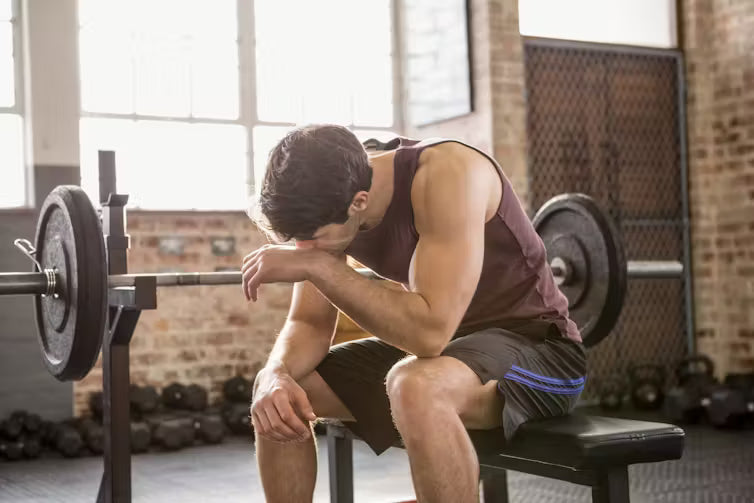
Training to Failure in Powerlifting: A Guide to When, Why, and Why Not
In the quest for strength, the idea of training to failure—performing reps until you physically cannot complete another one—is a hotly debated topic. Some swear by it as the ultimate driver of growth, while others view it as a reckless path to burnout and injury. For powerlifters, the truth lies in the middle. Training to failure is a tool, and like any powerful tool, it must be used strategically and sparingly. This guide will break down the science and application of training to failure for a strength athlete.
:max_bytes(150000):strip_icc()/GettyImages-89974940-5680b76c5f9b586a9edf2001.jpg)
What Happens When You Train to Failure?
Training to failure maximizes several key mechanisms for muscle growth (hypertrophy):
- Maximum Motor Unit Recruitment: To complete those final, grinding reps, your nervous system must recruit every available muscle fiber, including the high-threshold motor units responsible for generating the most force.
- Metabolic Stress: The intense effort creates a significant buildup of metabolic byproducts like lactate, which is a potent signal for muscle adaptation.
The Case FOR Training to Failure
While not ideal for main strength work, training to failure has its place in a powerlifter's program.
- On Accessory/Isolation Exercises: This is the best application. Taking exercises like bicep curls, triceps pushdowns, or leg extensions to failure is a highly effective way to stimulate hypertrophy in supporting muscle groups with a relatively low risk and low systemic fatigue cost.
- On the Final Set of a Volume Block (AMRAP): An AMRAP (As Many Reps As Possible) set on the last set of an exercise can be a great way to test your progress and provide a novel stimulus. For example, your program might call for "3 sets of 5, then one set of 5+ (AMRAP)."
- Mental Toughness: Learning how to grind through a tough rep can build mental fortitude.
The Case AGAINST Training to Failure
This is where the nuance is critical for powerlifters.
- Massive CNS Fatigue: A single set taken to failure on a heavy compound lift like the squat or deadlift generates a disproportionately large amount of CNS fatigue compared to stopping 1-2 reps short. This can negatively impact your recovery and performance for several days.
- Increased Injury Risk: As you approach failure, your technique is most likely to break down. A technical failure under a maximal load is how injuries happen.
- It's Not Necessary for Strength: The primary driver of strength is lifting heavy weight with good technique (specificity) and progressive overload. Research, such as that analyzed by experts at Stronger by Science, suggests that stopping 1-3 reps short of failure on heavy compound lifts provides a nearly identical strength stimulus with far less fatigue and risk.
- Hinders Volume Accumulation: If you take your first set of squats to failure, your performance on all subsequent sets will be severely diminished, reducing your total productive volume for the workout.
A Smart Powerlifter's Approach to Failure
- Never on the Main Lifts (Almost): Avoid taking your competition-style squat, bench press, and deadlift to true muscular failure in training. The risk-to-reward ratio is simply not worth it. The only time you should approach true failure is on the platform at a competition.
- Use RPE to Stay Shy of Failure: This is why RPE (Rate of Perceived Exertion) is such a valuable tool. Training your main lifts in the RPE 7-9 range ensures you are working hard and getting a powerful stimulus while always leaving 1-3 reps "in the tank." This is the sweet spot for building strength without accumulating excessive fatigue.
- Quarantine Failure to Accessories: Save your failure training for the end of your workout with low-risk, single-joint movements. This allows you to reap the hypertrophy benefits without compromising your main strength work.
Training to failure is not inherently good or bad; it's a method to be applied with intelligence and purpose. For powerlifters, whose sport is defined by maximal strength on compound lifts, true failure should be a rare event reserved for the competition platform. In training, the goal is to stimulate, not annihilate. By using RPE to stay just shy of failure on your main lifts and strategically applying it to your accessory work, you can get the best of both worlds: consistent strength gains and powerful muscle growth, all while managing fatigue and staying healthy for the long haul.
How do you incorporate training to failure in your program? Share your philosophy in the comments!








